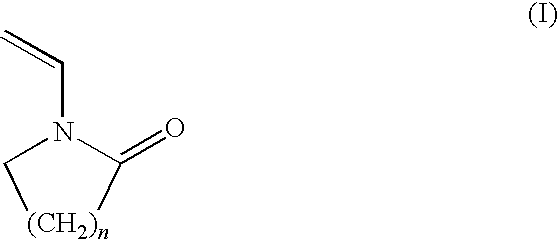Nonaqueous ink, image-recording method, image-recording apparatus and recorded article
a technology of image recording and non-aqueous ink, which is applied in nanoinformatics, instruments, transportation and packaging, etc., can solve the problems of reducing hardening efficiency, increasing energy, and requiring a long period of time for dispersing the fine water-insoluble colorant particles as resin fine particles,
- Summary
- Abstract
- Description
- Claims
- Application Information
AI Technical Summary
Benefits of technology
Problems solved by technology
Method used
Image
Examples
example 1
[0219]The Magenta Millbase A obtained above and the components for the following ink composition were mixed in a high-speed ice-cooled stirrer. The resultant mixture was filtered through a 5-μm membrane filter, to give a Magenta Ink A.
(Composition of Ink)
[0220]
CompositionAddition amount (mass part)Magenta Millbase A10.0N-vinylcaprolactam25.0FANCRYL FA-512A31.4NK Ester AMP-10G20.0FIRSTCURE ST-10.05Lucirin TPO8.5Benzophenone3.0IRGACURE 1842.0BYK-3070.05
examples 2 to 6
[0221]Magenta Inks B to F were obtained in the same manner as in Example 1, except that the Magenta Millbase A was replaced with any of the Magenta Millbases B to F, respectively.
example 7
[0223]The Cyan Millbase A obtained above and the components for the following ink composition were mixed in a high-speed ice-cooled stirrer. The resultant mixture was filtered through a 5-μm membrane filter, to give a Cyan Ink A.
(Composition of Ink)
[0224]
CompositionAddition amount (mass part)Cyan Millbase A6.0N-vinylcaprolactam25.0FANCRYL FA-512A35.4NK Ester AMP-10G20.0FIRSTCURE ST-10.05Lucirin TPO8.5Benzophenone3.0IRGACURE 1842.0BYK-3070.05
PUM
| Property | Measurement | Unit |
|---|---|---|
| particle diameter | aaaaa | aaaaa |
| particle diameter | aaaaa | aaaaa |
| particle diameter | aaaaa | aaaaa |
Abstract
Description
Claims
Application Information
 Login to View More
Login to View More - R&D
- Intellectual Property
- Life Sciences
- Materials
- Tech Scout
- Unparalleled Data Quality
- Higher Quality Content
- 60% Fewer Hallucinations
Browse by: Latest US Patents, China's latest patents, Technical Efficacy Thesaurus, Application Domain, Technology Topic, Popular Technical Reports.
© 2025 PatSnap. All rights reserved.Legal|Privacy policy|Modern Slavery Act Transparency Statement|Sitemap|About US| Contact US: help@patsnap.com



